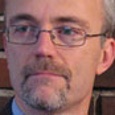
- All Instrument Types
- Indices
- Equities
- ETFs
- Funds
- Commodities
- Currencies
- Crypto
- Bonds
- Certificates
Please try another search

EU Growth Returns But ECB Not Getting Complacent: A Q4 Forecast

Economic Update
The Eurozone fared well throughout the quarter with signs of economic activity improving. This will please the European Central Bank (ECB) and vindicate their decision to implement the enormous €1.1t Quantitative Easing package earlier this year. GDP for the second quarter of 2015 has been revised upwards to 0.4% q/q and puts growth for the year at 1.5%, in line with the ECB’s previous growth forecast for 2015.
The labour market in the EU has steadily improved throughout the year and this month was no different. The EU-wide Unemployment rate dipped below 11% for the first time since May 2012, ending the quarter at 10.9%. Italian unemployment was a standout with a solid drop from 12.7% in July to 12.0% in September. Spain is also worth mentioning, with a fall in unemployment from 23.8% to 22.4% during the quarter. There is still a long way to go in some areas, but the trend is certainly encouraging.
The PMI reports highlight the differences between the largest member states and the challenges they face. The French manufacturing PMI remained in contractive territory at 48.6 with just 4 months in the last 4 years showing expansion. Germany on the other hand continues to remain on the expansive side of 50 at 53.2 and has remained there for 24 months in a row. The EU wide figures show improvement for the continent as a whole, and reflect the improving growth and employment figures above, with manufacturing at 52.4 and services at 54.3.
Inflation remains the dark spot on an otherwise improving report card for the EU. Annual CPI dipped to 0.1% y/ylate in the quarterfrom 0.3% at the beginning, which will be a disappointment to the ECB. Inflation in the last quarter looked to be making good progress as it climbed from the low of -0.6% y/y found in February, to a high of 0.3% y/y in June. The ECB will be hoping the current rate is just a blip in an otherwise improving situation, but it remains to be seen.
Quantitative Easing, which was a large talking point in previous reports, remains in place at its original rate (€60bn per month) and the ECB will be quietly relieved at the effect it has had. QE has lowered the cost of financing for business which has driven expansion in economic activity, the effects of which can be seen above.
There is, however, speculation the ECB may be running out of things to buy as it vacuums up vast quantities of debt. Subsequently, the ECB amended its mandate to allow itself to purchase up to 33% of any single bond issue, up from 25%. The central bank also expanded its QE policy to include Irish and Dutch mortgage bonds. Monetary Policy remained constant during the quarter with interest rates being held at their current level of -0.20% for deposits and 0.05% for refinancing.
The euro continued to climb against the US dollar during the quarter, largely thanks to the market’s expectation that US interest rate rises would be pushed back. The euro found itself the subject of solid demand as stock markets tumbled in mid-August. The lower yield of the euro resulted in perceived safe haven status compared to the US dollar, which came under pressure along with US stock markets. Normal service returned when the market realised the troubles in China may not spread to the rest of the world, however, the trend over the course of the quarter was a bias towards bullishness for the euro.
Economic Outlook
The European Central Bank sees some risks ahead and is not getting complacent with the strong economic results. ECB president Mario Draghi said Europe's economic recovery would continue "albeit at a somewhat weaker pace than expected". The ECB cut its growth and inflation forecasts, with inflation to remain "very low" for some years as threats to economic growth increase. The ECB have amended their forecast for EU economic growthfrom 1.5% to 1.4% in 2015, and 1.7% in 2016, down from 1.9% previously.
Inflation is likely to be largely absent from the EU for some time. Depressed commodity prices, particularly energy prices, will lead headline inflation to stick close to the 0% mark for some time. The ECB expects inflation to be 0.1% for 2015, rising to 1.5% in 2016 and 1.7% in 2017. Lower commodity prices and a stronger Euro have been recognised by Draghi as“having increased the risk to a sustainable path of inflation towards 2%". This is a rather pessimistic view from the ECB, so we believe there is room for upside surprises in the data.
If the outlook for inflation deteriorates further, there is a possibility that the bank could expand its stimulus programme if necessary. This would likely be in the form of a widened QE programme, both in terms of size and scope, with the chance of an adjustment to interest rates seen as slim. The ECB have hinted at increasing stimulus, but it would take a serious adjustment in the economic outlook for it to happen, given that growth is returning.
The euro is likely to climb further against the US dollar, but that will be more about USD weakness than euro strength. So much will depend on the US monetary policy outlook, with EU monetary policy remaining comparatively predictable. If there are any more shocks to global equity markets, we could see the euro gain considerably on the ‘safe haven’ status, given that the USD is perceived as more risky.
The most likely scenario is more of the same for the euro. We see slow and steady appreciation over the coming quarter as economic growth remains steady. Inflation is likely to remain flat for some time, which could lead to a downgrade of inflation forecasts. This in turn could lead to talk of further stimulus from the ECB, which will keep any solid euro gains in check.
Related Articles

Recent headlines appear to have shaken investor sentiment. It’s premature to read too much into a few days of weaker-than-expected survey numbers. More importantly, the latest...

Gold Consolidates Ahead of Key US Data Releases The gold (XAU/USD) price was relatively unchanged on Wednesday as markets remained cautious ahead of upcoming inflation data and...

For every trader, choosing a reliable broker is a cornerstone of success. Achieving consistent gains in trading is not a walk in the park as it is, and you don't want any extra...
Are you sure you want to block %USER_NAME%?
By doing so, you and %USER_NAME% will not be able to see any of each other's Investing.com's posts.
%USER_NAME% was successfully added to your Block List
Since you’ve just unblocked this person, you must wait 48 hours before renewing the block.
I feel that this comment is:
Thank You!
Your report has been sent to our moderators for review





Add a Comment
We encourage you to use comments to engage with other users, share your perspective and ask questions of authors and each other. However, in order to maintain the high level of discourse we’ve all come to value and expect, please keep the following criteria in mind:
Enrich the conversation, don’t trash it.
Stay focused and on track. Only post material that’s relevant to the topic being discussed.
Be respectful. Even negative opinions can be framed positively and diplomatically. Avoid profanity, slander or personal attacks directed at an author or another user. Racism, sexism and other forms of discrimination will not be tolerated.
Perpetrators of spam or abuse will be deleted from the site and prohibited from future registration at Investing.com’s discretion.